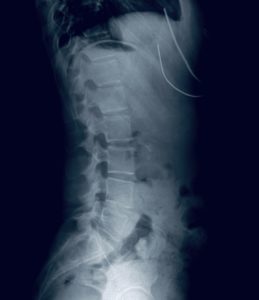How is low back pain classified?
Low back pain is a broad spectrum and therefore requires classifications to distinguish the proper treatment pathways. A definitive classification of low back pain is needed. These classifications are official and stipulated by the medical arena as well as being referenced by WHO (the world health organisation).
There are three categories of low back pain. Those are specific spinal pathology (a fracture or tumour for example), nerve root (sciatica for example) and finally what is known as “non-specific”. Non-specific is what does not fit into the other two categories. Non-specific low back pain means simply because no medical diagnosis can be given for the cause of pain.
Specific spinal pathology has a definitive cause and treatment for this remains within the medical area. Nerve root causes can vary to include radiating pain from the source, and again remains within the medical arena.
Non-specific is also the largest classification making up anywhere between 85% to 95% of back pain cases. Non-specific does not mean there is no cause nor that there is no pain. With the largest classification there is rarely just one cause of pain as usually there are multiple reasons for back pain.
How do I know what classification my back pain is?
The first step is a medical consultation to discuss your back. This should lead to the correct advice being given or the correct referral to a medical specialist in this field. From this point an individual should either have a diagnosis or fall into the category of non-specific pain. There are a few official “pathways” this can take from medical care to appropriate and structured physical activity (especially in relation to non-specific”.
It should also be noted that the classifications of back pain are not devised by specialist exercise instructors. They are devised by the medical profession and health organisations.
Why do we need classifications for low back pain?
As mentioned previously, low back pain is a broad topic and there are also many reasons why a person may suffer with low back pain. In order to make the correct approach to improving the situation, a classification of low back pain is essential for the correct treatment pathway.
Clarification assists as to where a person should be directed for LBP improvement/rehab. The cause and nature of back pain always needs to be considered. For example if a person has a trapped nerve It may be a sciatic nerve issue it may not be. This would be looked at in a clinical setting. The same can be said for specific spinal pathology where there is a direct cause for pain. These areas or categories remain in the medical arena.
This immediately demonstrates the need for a classification of low back pain. Any low back pain falling outside of the above categories is known as non-specific.
Other considerations regarding low back pain classification.
There are further considerations regarding low back pain and that is the timescale of when pain started. Some back pain may have been brought on suddenly by an activity, causing strain, tension or related incidence. There are many back pain instances where pain will clear up of its own accord given a few days or even weeks. There are other instances where pain is ongoing beyond three months. This is known as chronic back pain. Chronic low back pain is not normal.
This indicates there are other “factors” going on and commonly falls into the non-specific realm. A point to note regarding the term “non-specific”. There are some views that non-specific does not exist as there is clearly specific causes for the inset of LBP. As mentioned previously in this post section “how is low back pain classified?” non-specific does not mean there are no specific causes (usually multiple), nor any pain.
It simply means it cannot be classified in the other categories. There are clearly causes for non-specific low back pain, and the causes of which are looked at and determined during an assessment. There is typically more than one cause and this often overlaps into lifestyle and daily habits too.
It is essential that a person suffering with low back pain embarked on the correct treatment route. With long term or “chronic” pain this invariably involves structured physical activity along with lifestyle interventions. It is important that the body is provided with what has been lacking, from correcting muscle imbalances and movement dysfunction to overall “movement improvement”.
A final point to note.
Low back pain shockingly still ranks as high for disability across society. This is largely because individuals with low back pain often don’t seek the correct pathway for their back pain. If a person is suffering with worrying back pain then medical advice should be sought in the first instance to determine the cause. Hence the classification of LBP. Only then can the appropriate steps be taken. This post provides a basic overview into the official categorisations of low back pain.
For more help and guidance regarding low back pain and to get on track, dont hesitate to make contact and book your free chat.
info@grahamfit.com

